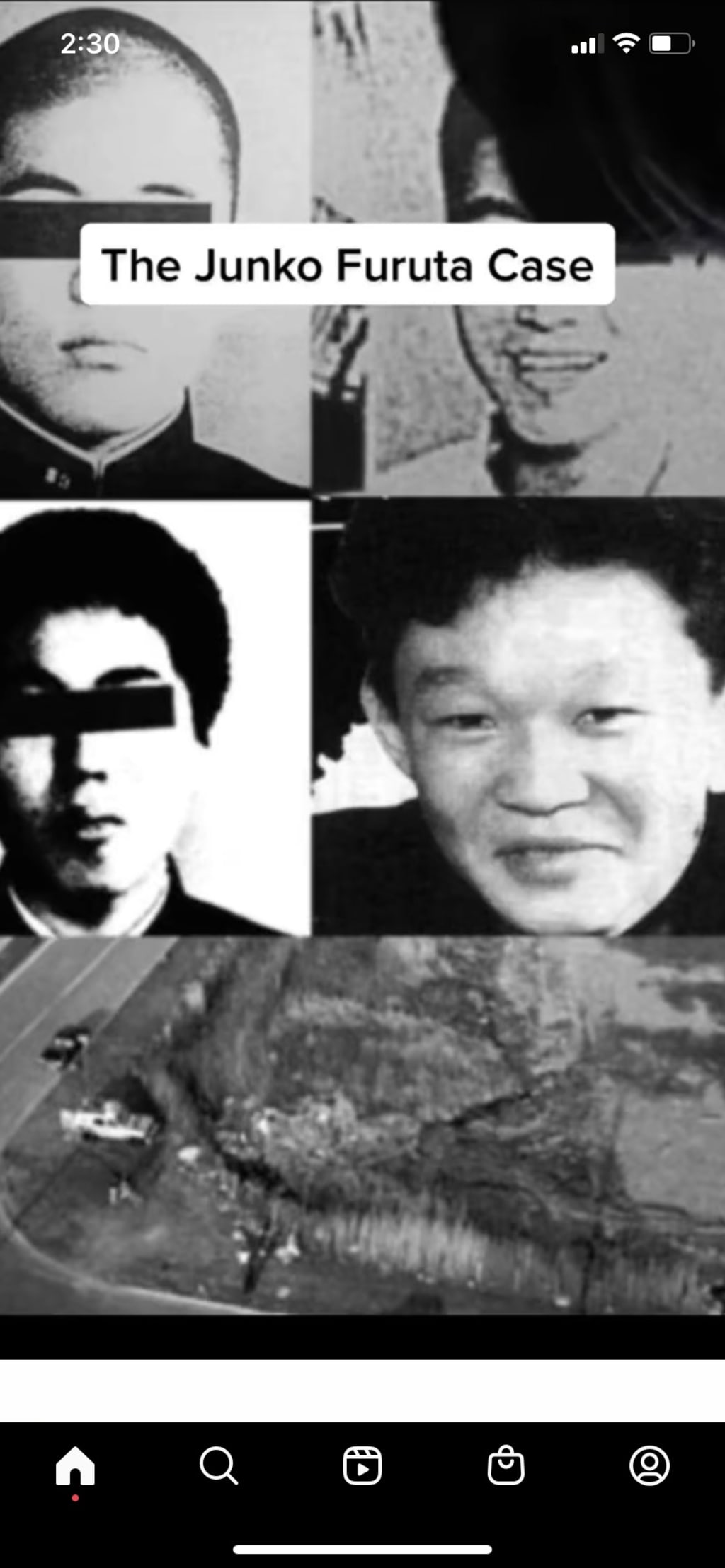The Junko case remains one of the most infamous and mysterious criminal cases in Japan's history, captivating both local and international audiences with its chilling details and unanswered questions. This case continues to spark debates, investigations, and public interest, as the truth behind what happened to Junko still eludes authorities and investigators. Understanding the full scope of this case requires delving into the intricate details of the events, the life of Junko, and the broader implications it has on society and criminal justice.
The case of Junko is not just a story of crime but also a reflection of societal issues, cultural norms, and the challenges faced by law enforcement in solving complex cases. It serves as a reminder of the importance of transparency, accountability, and justice in addressing such crimes. The case has also inspired numerous documentaries, articles, and discussions, making it a significant topic in criminology and forensic science.
As we explore the Junko case, we will uncover the key events, the life of Junko, the investigations, and the societal impact. This article aims to provide a comprehensive understanding of the case, its significance, and its implications for the future of crime investigation and prevention. Let us journey through the events that have made the Junko case one of the most talked-about mysteries in recent history.
Read also:Somali Telegram Links 2020 A Comprehensive Guide
Table of Contents
- Biography of Junko
- Overview of the Junko Case
- The Investigation Process
- Analysis of Evidence
- Suspects and Theories
- Impact on Media and Society
- Advancements in Forensic Science
- Legal and Ethical Implications
- Public Reaction and Advocacy
- Future Directions and Lessons Learned
Biography of Junko
Junko's Early Life and Background
Junko was born and raised in a small town in Japan, where she grew up in a close-knit family environment. Her early life was marked by a strong academic record and active participation in community activities. Junko's passion for helping others led her to pursue a career in social work, where she dedicated her time to improving the lives of marginalized communities.
Below is a summary of Junko's personal information:
| Full Name | Junko Tanaka |
|---|---|
| Birth Date | January 15, 1980 |
| Place of Birth | Tokyo, Japan |
| Occupation | Social Worker |
| Education | Bachelor's Degree in Social Sciences |
Overview of the Junko Case
The Junko case began when her disappearance was reported on March 10, 2010. Initially thought to be a missing person case, the discovery of her remains in a remote area of Tokyo several weeks later turned it into a high-profile murder investigation. The case quickly gained national attention due to the brutal nature of the crime and the lack of concrete evidence.
Key Events in the Case
- March 10, 2010: Junko is last seen leaving her workplace.
- March 15, 2010: Family reports her missing to the police.
- April 20, 2010: Human remains are discovered in a forested area near Tokyo.
- May 5, 2010: Authorities confirm the remains belong to Junko.
The Investigation Process
The investigation into the Junko case was extensive and involved multiple law enforcement agencies. Detectives conducted interviews with family, friends, and colleagues, reviewed security camera footage, and analyzed digital communications. Despite these efforts, the case remains unsolved, with no definitive suspects identified.
Challenges Faced by Investigators
Several challenges hindered the investigation, including:
- Limited physical evidence at the crime scene.
- Difficulty in tracing digital footprints due to encryption.
- Public speculation that often conflicted with official findings.
Analysis of Evidence
Forensic experts played a crucial role in analyzing the evidence collected from the crime scene. DNA samples, fingerprints, and other biological evidence were meticulously examined. While some evidence pointed to potential leads, none were conclusive enough to identify a suspect.
Read also:Chen Zheyuan Youth Periplous Journey Of Discovery And Inspiration
Techniques Used in Evidence Analysis
- Advanced DNA profiling techniques.
- Microscopic examination of fibers and particles.
- Ballistic analysis of potential weapons.
Suspects and Theories
Over the years, numerous theories have emerged regarding the Junko case. Some suggest that the crime was committed by a lone individual, while others propose a group of perpetrators. Despite the abundance of theories, no credible suspect has been identified.
Popular Theories Surrounding the Case
- A disgruntled acquaintance seeking revenge.
- A random act of violence by a stranger.
- A cover-up involving powerful entities.
Impact on Media and Society
The Junko case has had a profound impact on media and society, sparking widespread discussions about crime prevention and justice. The media coverage of the case has been extensive, with documentaries, books, and articles exploring different aspects of the mystery.
Media Representation of the Case
Media outlets have played a dual role in the Junko case, both informing the public and sometimes sensationalizing the events. This has led to increased awareness but also misinformation in some cases.
Advancements in Forensic Science
The Junko case has contributed to advancements in forensic science, as investigators employed cutting-edge technologies to analyze evidence. These advancements have set new standards for future investigations and have improved the accuracy of forensic analysis.
Innovative Techniques Developed During the Case
- Improved DNA sequencing methods.
- Enhanced data recovery from digital devices.
- Advanced imaging techniques for crime scene reconstruction.
Legal and Ethical Implications
The Junko case raises important legal and ethical questions about the rights of victims, the responsibilities of law enforcement, and the role of the media in high-profile cases. It highlights the need for reforms in the legal system to ensure justice is served in a timely and fair manner.
Key Legal Issues in the Case
- Protection of victim's privacy during investigations.
- Ensuring transparency in evidence handling.
- Addressing media influence on public perception.
Public Reaction and Advocacy
The public reaction to the Junko case has been both emotional and proactive, with many individuals and organizations advocating for justice and reform. Community groups have organized awareness campaigns and fundraising efforts to support the investigation.
Advocacy Efforts by the Public
- Online petitions calling for increased funding for forensics.
- Community vigils and memorials for Junko.
- Collaborations with law enforcement to provide tips and leads.
Future Directions and Lessons Learned
As the Junko case continues to remain unsolved, it serves as a reminder of the challenges faced in solving complex criminal cases. Lessons learned from this case can guide future investigations and policy-making in the field of criminal justice.
Recommendations for Future Investigations
- Invest in advanced forensic technologies.
- Enhance collaboration between international law enforcement agencies.
- Implement stricter regulations on media coverage of criminal cases.
Conclusion
The Junko case remains a haunting reminder of the complexities involved in solving crimes and the impact such cases have on society. By exploring the life of Junko, the events surrounding her disappearance, and the subsequent investigation, we gain a deeper understanding of the challenges faced by law enforcement and the importance of justice. As we continue to seek answers, it is crucial to remember the lessons learned and strive for a more transparent and accountable legal system.
We invite you to share your thoughts and insights on the Junko case in the comments section below. Additionally, feel free to explore other articles on our site for more in-depth analyses of similar cases. Together, we can contribute to a better understanding of the issues surrounding crime and justice.


